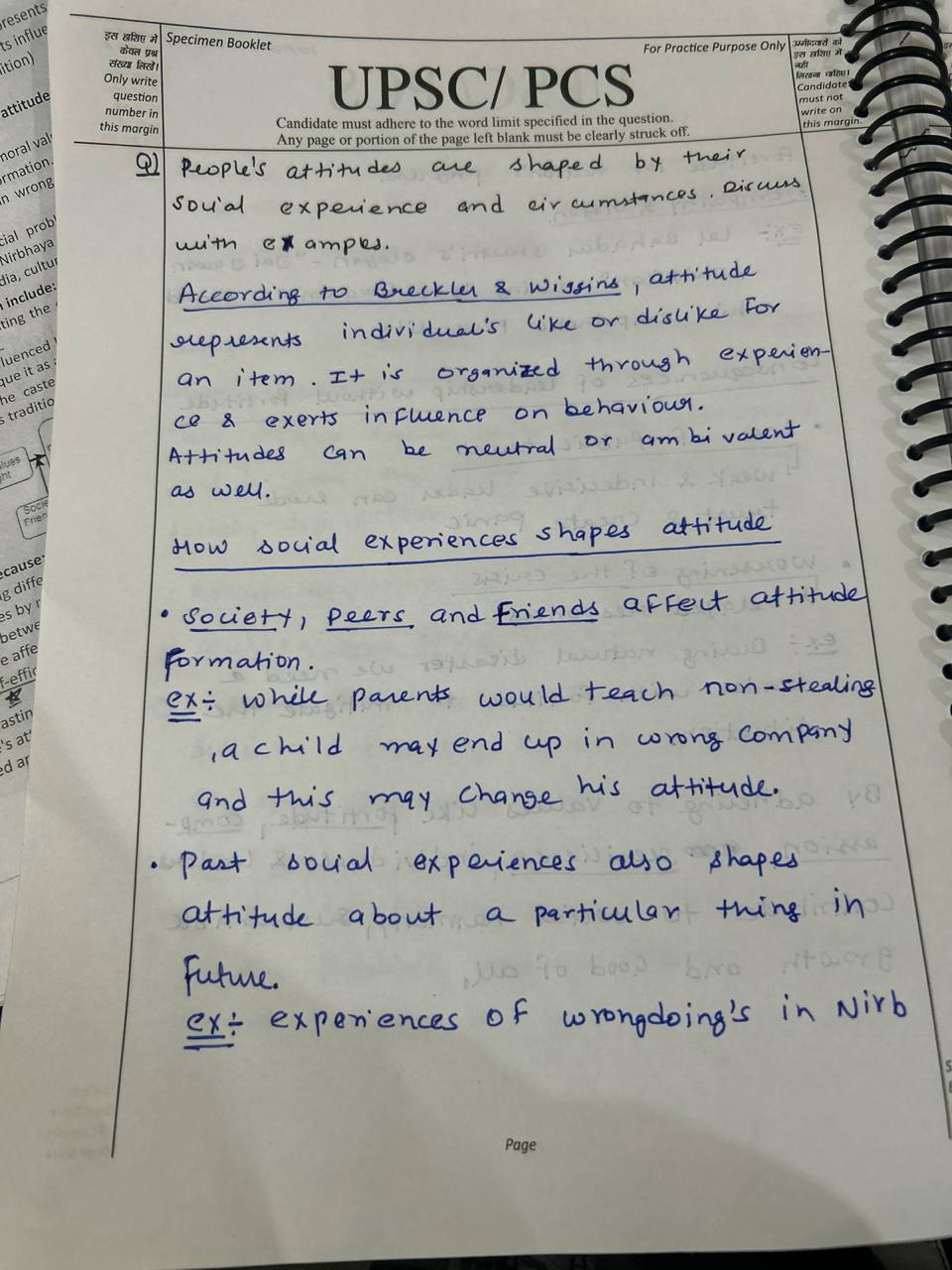Roadmap for Answer Writing 1. Introduction Briefly introduce the concept of “attitude” and its relevance. Define attitude: A psychological tendency expressed by evaluating a particular entity with some degree of favor or disfavor. State that attitudes influence perceptions and interactions by acting as filters ...
Model Answer Introduction Public servants play a crucial role in shaping public administration, influencing the effectiveness, responsiveness, and accountability of government operations. Two contrasting attitudes observed among public servants are the bureaucratic attitude and the democratic attituRead more
Model Answer
Introduction
Public servants play a crucial role in shaping public administration, influencing the effectiveness, responsiveness, and accountability of government operations. Two contrasting attitudes observed among public servants are the bureaucratic attitude and the democratic attitude.
Body
Bureaucratic Attitude
The bureaucratic attitude is characterized by strict adherence to rules and regulations, emphasizing hierarchy and formal procedures. This approach ensures consistency, predictability, and impartiality in decision-making, which can help mitigate personal biases (Weber, 1946). However, it also leads to rigidity, making it difficult to adapt to changing circumstances. For example, bureaucratic processes can slow down responses to urgent public needs, resulting in frustration among citizens.
Democratic Attitude
In contrast, the democratic attitude focuses on public service and responsiveness to citizens’ needs. It fosters innovation and creativity in problem-solving, allowing public servants to engage actively with the community (Dahl, 1989). While this attitude promotes a more adaptable and participatory governance style, it can also lead to a lack of accountability and a tendency toward populism, where decisions are made to please the majority rather than adhere to objective criteria.
Achieving Balance
A balanced approach that incorporates elements of both attitudes can significantly enhance public administration. Training public servants in both bureaucratic and democratic frameworks enables them to recognize when to follow established procedures and when to innovate (Kettl, 2015). Furthermore, creating an enabling environment that encourages citizen participation and feedback can help ensure that policies are both responsive and consistent.
Conclusion
By combining the merits of bureaucratic and democratic attitudes, public administration can better serve the community while maintaining the essential qualities of consistency and impartiality. Achieving this balance requires ongoing training, accountability, and an environment that fosters both innovation and adherence to procedures.
See less


Model Answer Attitudes play a pivotal role in shaping how individuals perceive and interact with the world around them. They act as mental filters, influencing the way we interpret new information, respond emotionally, and engage socially. Here’s how attitudes shape our perceptions and interactions:Read more
Model Answer
Attitudes play a pivotal role in shaping how individuals perceive and interact with the world around them. They act as mental filters, influencing the way we interpret new information, respond emotionally, and engage socially. Here’s how attitudes shape our perceptions and interactions:
1. Aid in Processing Knowledge
Attitudes serve as cognitive frameworks that guide our understanding of new information. They help us filter and interpret data, often leading us to favor or reject certain ideas. For instance, someone with a positive attitude toward environmental sustainability is more likely to view pro-environmental news as credible and relevant. This bias towards favorable information reinforces their existing beliefs and attitudes.
2. Improving Social Interactions
Attitudes are crucial in shaping social dynamics. When individuals share similar attitudes, it fosters a sense of unity and understanding, making social interactions smoother. For example, workplaces where employees have positive attitudes towards diversity experience increased collaboration and creativity, while reducing conflicts and fostering an inclusive culture.
3. Consistency Between Attitude and Behavior
One significant effect of attitude is its ability to influence consistent behaviors. People who have strong, well-established attitudes are more likely to act in alignment with those beliefs. For example, someone with a strong negative attitude toward smoking is less likely to engage in the behavior, further reinforcing their smoke-free lifestyle.
4. Emotional Response
Attitudes also shape emotional responses. A person with an optimistic attitude is more likely to experience joy and enthusiasm in various situations, while someone with a negative attitude may often feel frustrated or disappointed. These emotional responses, in turn, influence interactions with others and the world at large.
5. Communication
Attitudes influence how we communicate. A positive, open attitude promotes effective communication and strong relationships, while negative or hostile attitudes can create barriers, misunderstandings, and conflicts. The way we approach others is deeply intertwined with our attitudes, impacting the quality of interactions.
In conclusion, attitudes are essential in framing how we interpret the world, interact with others, and behave in various situations. They are a fundamental psychological tool that guides our daily experiences and long-term development.
See less